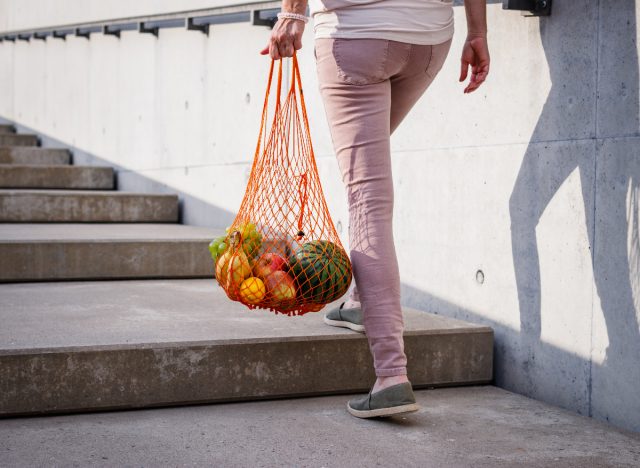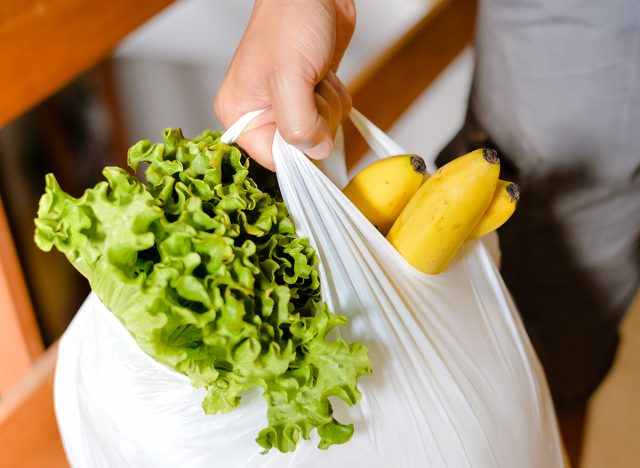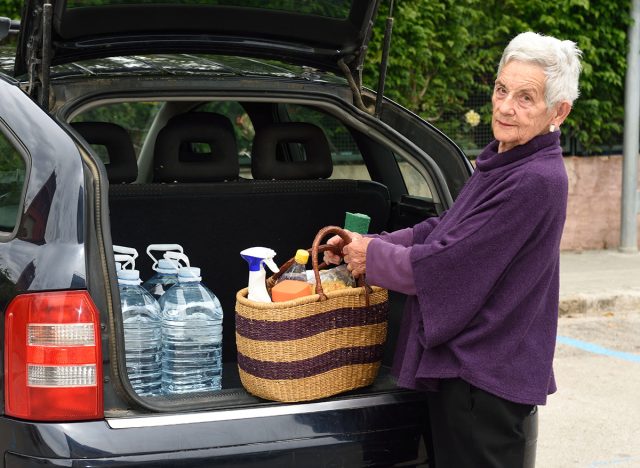If You Can Carry These Shopping Bags This Long After 55, Your Real-World Strength Is Elite

Maintaining and building real-world strength is essential to leading a long, healthy life. After all, your ability to perform daily tasks with confidence and ease depends on it, says Felicia Hernandez, NASM-certified personal trainer and community engagement lead at Eden Health Club. There are various ways to test functional fitness—including something as simple as carrying grocery bags. Below, Hernandez breaks down the exact weight of grocery bag carries that signal elite real-world strength.
The Importance of Functional Strength After 55

“Every day at Eden, I observe members who lift heavy weights during exercises yet fail to manage their grocery bags when walking from the car, and people who perform well on machines yet lose their balance when walking with laundry baskets,” Hernandez tells us.
The main difference between traditional resistance training and functional training? Their objectives. Strength training typically hones in on weightlifting, while functional training is all about exercises that help you avoid injury and move better.
“Your body requires strength that directly supports your regular activities, including grocery carrying, grandchild lifting, furniture moving, and high-shelf reaching after reaching age 55,” Hernandez points out. “Research indicates functional training provides essential advantages to all population groups by enhancing joint flexibility and balance, and core strength, which helps prevent accidents and supports everyday activities during retirement years. The strength that matters most for your quality of life exists in this form.”
How Aging Impacts Grip, Arm, and Core Strength

Aging can majorly impact grim, arm, and core strength—all of which are essential for completing daily tasks like carrying groceries. You start to naturally lose 3% to 8% of lean muscle every decade after 30; this process—known as sarcopenia—only speeds up after you hit 55.
“Your grip strength depends on the complete movement of your kinetic chain, which extends from your hands to your entire body. Your grip failure triggers shoulder compensation and core muscle exhaustion, which makes basic grocery shopping tasks extremely tiring. The essential nature of functional strength training emerges because it teaches people to work with their entire body system at once,” Hernandez explains. “The good news? The process of muscle deterioration does not have to occur naturally. The exercise of farmer’s carries strengthens your grip and core muscles and shoulder stability, which enables you to handle multiple grocery bags during real-life situations.”
If You Can Carry These Grocery Bags This Long After 55, Your Real-World Strength Is Elite

The ability to carry a certain amount of weight for an extended period of time reveals what shape your functional fitness network is in. If you’re able to maintain the carry, this signals a stable core, strong grip power, solid posture, and powerful cardiovascular performance.
Based on her experience working with people 55+, Hernandez shares the benchmarks she typically uses for “elite” functional strength.
“The specified weight ranges indicate superior functional strength because they enable people to perform real-life tasks without exhaustion,” Hernandez notes. “The goal of this assessment focuses on functional strength endurance, which enables daily independence rather than maximum weight-lifting ability.”
For Grocery Bag Carries (Two Bags; One Per Hand):
- Women 55+: 15 to 20 pounds in each hand for 60 to 90 seconds of walking
- Men 55+: 20 to 25 pounds in each hand for 60 to 90 seconds of walking
For Single-Arm Farmer’s Carry:
- Women: 25 to 30% of body weight for 45 to 60 seconds of walking
- Men: 35 to 40% of body weight for 45 to 60 seconds of walking